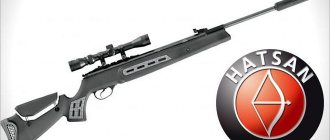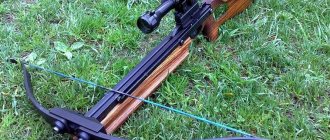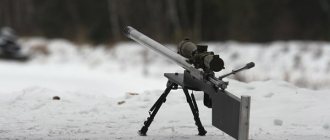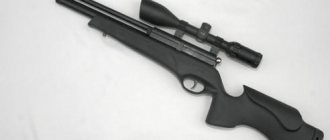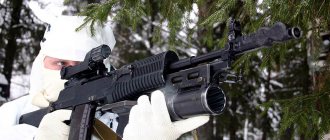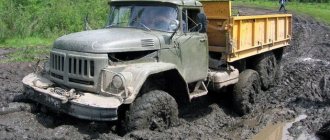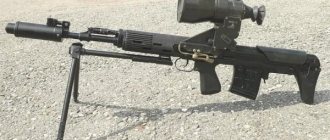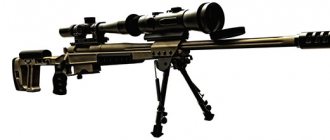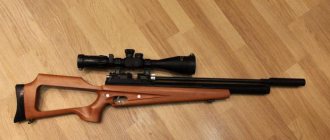Cartridge 10.75×58 R / .43 Berdan
| 10.75×58 R/.43 Berdan |
The 10.75×58 R Berdan cartridge is known with the designations: 10.75×58 R Berdan Ruso / 10.75×57 R Berdan / 10.67×58 R Berdan / 11×57 R Berdan Bulgaro Mod.1871 / .43 Berdan / .42 Berdan No. 1 & No. 2 Russian Mod. 1869 & Bulgarian Mod.1871 / .420 Berdan Ruso / 10.66 Berdan Ruso / 10.6 Russian Berdan / 10.8×57.5 R / 11 mm Berdan Bulgaro / DWM 39 / GR 61 / SAA 8160 / SAA 8165 / XCR 11 058 BBC 070.
The 10.75×58 R (.43 Berdan) cartridge was developed in the 60s of the 19th century by American weapons designer, Colonel Hiram Berdan.
10.75×58 R Berdan
In 1868, the Berdan rifle along with the cartridge was adopted by the Russian army. And in 1870, this rifle was replaced by the Berdan rifle No. 2, which had a sliding bolt and an improved sight.
Rifles of the 1870 model were produced in an infantry version and in a shortened version (dragoon, Cossack), differing in barrel length. Also, the Berdan cartridge was produced in two versions, differing in the amount of black powder.
The Berdan cartridge consists of a solid-drawn brass bottle-shaped case, a primer, a charge, a seal and a bullet.
The sleeve inside has a brass cup to strengthen the head and a central capsule.
A charge of gunpowder of saltpeter-coal powder (with brown coal) weighs 1.19 gold for an infantry rifle. (5 g), for cavalry weapons - 1 gold. (4.265 g).
A sealant made from a mixture of lard and wax is placed on the gunpowder in a paper cup. The seal serves to better seal and soften carbon deposits in the barrel. The cavalry cartridge contains two seals.
Bullet weighing 5 gold. 63 dollars (24.16 g) - cylindrical-ogive stamped from pure lead (a heavy unsheathed bullet made of pure lead caused very serious wounds, especially when hitting bone), in a paper wrapper. The outside of the wrapped bullet is coated to reduce friction of the bullet in the barrel when fired. There is a recess in the bottom of the bullet to accommodate the knotted end of the paper.
| 10.75×58 R Berdan cross-section |
When fired, a long bullet contracts in length, increases in caliber and fills the rifling. The paper wrapper protects the rifling from lead, insulates the metal of the bullet and cartridge case, and also prevents longitudinal tracks from being cut into fields on the bullet as the bullet passes through the barrel. After leaving the barrel, the paper falls off the bullet by air pressure as the bullet rotates, for which the outer side of the paper is directed against the rotation of the bullet. To distinguish the cavalry cartridge from the infantry cartridge, the paper for the cavalry cartridge bullet wrapper was colored pink, and the infantry cartridge bullet wrapper was painted white.
10.75×58 R Berdan
Berdan infantry cartridge weighed 9 gold. 23 shares (39.4 g). The initial velocity and muzzle energy of the bullet of this cartridge were respectively 442 m/s and 2346 J. When shooting from an infantry rifle at one-inch pine boards at 200 steps, the bullet pierced from 7 to 9 boards, at 800 steps - from 4 to 7.5 boards, for 1200 steps - from 4 to 4.5 boards, for 2000 steps - from 1.5 to 3 boards. From 100 to 200 steps, the bullet pierced 3 iron sheets in 1 line (2.5 mm) each, thick.
The cavalry cartridge bullet had an initial velocity and muzzle energy of 415 m/s and 2069 J, respectively.
After the Russian army was rearmed in 1891 with the Mosin repeating rifle, some of the Berdanoks were used for hunting purposes. However, according to some sources, due to the shortage of rifles during the First World War, Berdan rifles and carbines were used in limited quantities by the Russian army, as well as by the Finns during the Soviet-Finnish war of 1939-1940.
As a hunting ammunition, the Berdan cartridge, together with the Berdana, was very popular at one time. To this day, legends circulate throughout the Siberian taiga villages about the remarkable killing power of this cartridge for large animals. The Berdan cartridge was used for hunting bear, elk, deer, and wild boar.
Currently, both the cartridge and the real Berdan 2 rifle can be found, perhaps, only in museums.
| 10.75×58 R Berdan |
Cartridge for the Berdan rifle
Tula plant
Petersburg plant
Unfortunately, I have no information on the designations before 1880; most likely the letter B stands for the Vasileostrovsky cartridge case department of the St. Petersburg cartridge plant. and the top sign is the name of the brass manufacturer.
Manufactured by Keller & Co., Hirtenberg Austria, probably commissioned by Bulgaria for the Serbo-Bulgarian War.
Comments and additions are accepted by mail: [email protected] Andrey.
Thank you very much -
Alexey from Minsk and Dmitry from Kyiv
For additional material.
Literature.
-V Fedorov EVOLUTION OF SMALL ARMS Military Publishing House 1938.or Technology - Youth 2005
-Vladimir Mavrodin RUSSIAN RIFLE Leningrad. Leningrad University Publishing House 1984.
— Boris Davydov DOMESTIC CARTRIDGE FACTORIES. Independent Military Review 08/02/2002
— Boris Davydov Cartridge business in Russia. World of weapons 10-11 2005
-BRIEF GUIDE TO RED ARMY SMALL ARMS CARTRIDGES. Military publishing house 1946.
-Magazine “Weapons” Historical series 1/2003 Cartridges.Technology-Youth 2003
-A. Blagonravov MATERIAL PART OF SMALL ARMS. Oborongiz 1945
— A.A Manikovsky. Combat supply of the Russian army during the World War. M. 1937.
— Mikhail Mukhin EVOLUTION OF THE MANAGEMENT SYSTEM OF THE SOVIET DEFENSE INDUSTRY IN 1921-1941. magazine "Domestic History" No. 3, 2000.
Links
https://www.cartridgecollectors.org/ Website of American collectors. Quite a detailed breakdown of manufacturers in alphabetical order in the headstampcodes - about 8000 designations. In the section Wartime Small Arms Ammo Producers of the USA - manufacturers of Small Arms Ammunition in the United States during the war. Cartridges from these factories were used in the USSR during the Second World War.
https://www.municion.org/ Website in Spanish. Dedicated entirely to markings on cartridges. And it is updated and supplemented quite regularly. The explanation is given by type of cartridge. By entering the Fuego Central - central ignition cartridges, we find the desired caliber range, for example 7 a 7.65m / .32 and find the desired cartridge - 7.62x54R. -a total of about 300 different types of cartridges, more than 3,000 stamps. In addition, the BASES DE DATOS provides DWM codes - Códigos de la DWM and German codes - Alemania
Lots of other interesting information.
https://www.bordingl.com/zfondelli.htm Website in Italian. Labeling by country is provided.
The German Codes - For those especially interested. A detailed description of German markings and the ability to determine the type of cartridge by batch number and manufacturer code.
Small Arms Ammunition Identification Guide, Volume 1, Illustrations of markings and identification methods in English. Text in PDF format. For the USSR, mainly from 1943 to 1970.
Forums
If you find a cartridge or cartridge case unknown to you, or are interested in deciphering the markings on it, ask your question on the military archeology forums. There are quite competent people on the forums who will provide you with the necessary information. Just try to correctly describe the sample you have and, if possible, provide photographs. The sleeve length in mm must be indicated. , bullet diameter or estimated caliber, presence of a protruding flange on the cartridge case (R). If this is a photograph of a cartridge, then it is better that the hole drilled in it is visible, i.e. the cartridge is turned into a dummy (without gunpowder).
https://www.trizna.ru/phpBB2/ - the Trizna search association, a very interesting forum for those interested in the technology of the Second World War.
https://reibert.info/forum/ - REIBERT website. Ukrainian forum on the Second World War.
https://talks.guns.ru/static/forumtopics/36.html section “History of Weapons” on talks.guns, a weapons forum. The entire period of history, not only the Second World War.
Forum participants are people from different parts of Russia, Ukraine, the Baltic states, Bulgaria and other countries. And it’s rare that a question doesn’t have the correct answer.
For those who speak English there are forums on the following sites:
https://www.gunboards.com/forums/ https://www.municion.org/ https://www.cartridgecollectors.org/
Additional Information :
R. Chumak K. Soloviev Cartridges for a supermachine gun Kalashnikov Magazine No. 1 2001
Samples of marking (stamping) of ShKAS cartridge cases
Advantages and disadvantages
The rifles of the first and second samples did not have a magazine and were single-shot. Experienced shooters could place up to ten bullets in one minute in a one and a half meter circle from a distance of one hundred meters. This was considered a good result at that time. However, for armament, the infantry rifle was considered not entirely unsuccessful: firstly, it required good shooting skills from the soldiers, and secondly, they had to be trained to use it for about a month. This was explained by the fact that the design of the hinged bolt, as well as the care of this gun, were quite complex.
Where can you see Berdankas today?
They can still be seen occasionally today; these guns are passed down from generation to generation in those families in which hunting has become a tradition. In the 10s, 20s or 30s of the 20th century, berdankas, as a rule, were purchased by people of average income who did not have enough money to buy luxury weapons. They often hunted not for fun; it served as a tool for obtaining their daily bread. But today, decades later, antique guns have become a source of pride and, in some cases, collectibles. There are houses where my grandfather’s Berdan rifle hangs on the wall. A photo of its first owner against the backdrop of some kind of hunting trophy recalls those distant years when there was more game in the forests and people were kinder. Such relics are treasured.
Russian officers in America
In the second half of the nineteenth century, the Russian military leadership launched a large-scale rearmament, which mainly concerned the transition to new rifle models. The six-line caliber had, of course, enormous penetrating and knockback power, but the experience of combat dictated a reduction in the weight of the bullet in favor of lightening the load carried by a soldier on a campaign. The principle of reasonable sufficiency finally triumphed, and the General Staff began to show interest in foreign experience. The leader among countries that mass produced small arms was the North American States. The United States had enough war experience, the Indians added worries from time to time, and the requirements for equipment were high here. A delegation consisting of Colonel Gorlov and Staff Captain Gunius, who were well acquainted with the urgent needs of the Russian Army, went to America. They were joyfully greeted by Colonel Hiram Berdan, an officer and inventor. He had already sold his patent to the armies of Britain and Spain and hoped to interest representatives of the Russian Imperial Artillery Department in it. The four-line rifle of the Berdan system made the best impression on Gorlov and Gunius.
Conversion
Berdanki remained in military schools, where cadets learned shooting accuracy and hand-to-hand bayonet fighting techniques using them. Most of the total number of rifles was coated with grease, packed and sent to warehouses as a mobilization reserve. Then weapons factories were allowed to convert military weapons into hunting weapons. For several years, the domestic market was filled with inexpensive and very high-quality conversion products. To understand the degree of affordability of the price, it is enough to consider that the average salary of a skilled worker in the Russian Empire at the end of the 19th century approximately corresponded to the amount of 60 rubles. A Berdan hunting rifle (converted from a combat rifle, with a drilled smooth barrel) cost up to 20 rubles, and in the economical version - 15, or even 10. A package of cartridges (100 pieces) cost 6 rubles. Factories also accepted individual orders for the production of especially beautiful specimens with nickel-plated metal parts, with a stock and forearm made of valuable wood and with dedicatory or commemorative engravings. At the request of the client, even “children’s” berdanks were produced. Typically, such widespread availability of weapons had no effect on the crime rate.
The reworking process was facilitated by the large thickness of the barrel, which the Berdan rifle could boast of. The caliber of hunting samples could reach 12 (18.5 mm), but more often it was sixteenth (16.8 mm).

